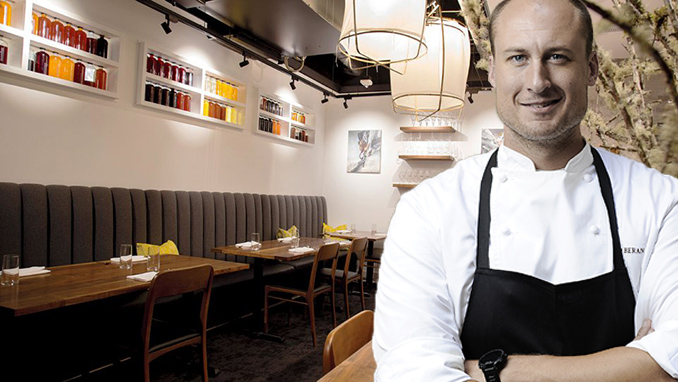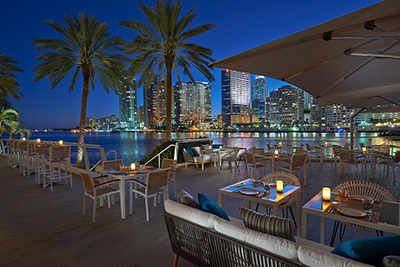 The suburban, massive shopping malls of the 1980s and 1990s often bring to mind several familiar tastes, smells and favorite past times: teeny bopper stores selling the latest trend clothing and accessories, portable pop ups in the middle of aisles, and big box stores flanking each side of the mall. One of the most popular gathering spots at the mall is the food court, where shoppers can indulge in comfort fast food of all different types of cuisine, from deep fried Chinese favorites and pizza by the slice to soft, warm jumbo pretzels and endless candy shops.
The suburban, massive shopping malls of the 1980s and 1990s often bring to mind several familiar tastes, smells and favorite past times: teeny bopper stores selling the latest trend clothing and accessories, portable pop ups in the middle of aisles, and big box stores flanking each side of the mall. One of the most popular gathering spots at the mall is the food court, where shoppers can indulge in comfort fast food of all different types of cuisine, from deep fried Chinese favorites and pizza by the slice to soft, warm jumbo pretzels and endless candy shops.
In today’s world however, oversized shopping malls are beginning to be replaced with smaller, more boutique specialty centers, as the consumer is growing increasing more selective in the types of the store they shop at and yearning for more substantial, high-quality food options for their families to enjoy. This trend is being seen in major cities across the country, from Seattle to Atlanta, and has become particularly popular in Los Angeles.
The City of Angels appears to be the prime location for these types of specialty shops: a driving culture where shoppers can easily seek out their desired shopping and eating experience by car. Sprawling green spaces, intricate décor, local artists performing and some of the city’s most high-end, sought after restaurants can be found in these modernized shopping areas.
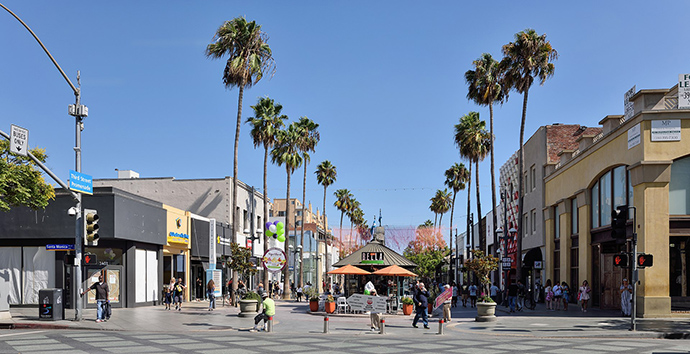
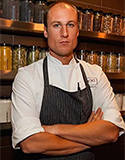
Located in Santa Monica, CA, Third Street Promenade has become known for its proximity to the beach and pier, its curated shops and now, a fine dining restaurant that is bucking tradition with its unique location: Dialogue Restaurant. This intimate, 18-seat restaurant is led by James Beard award-winning chef Dave Beran, offering a one menu tasting format and telling a unique story using seasonal produce native to California to create a truly one of a kind experience that will excite emotions and senses. Dialogue adds an element of mystique and exclusivity with its hidden entrance; In order to access the restaurant, the entry is hidden behind an inconspicuous and unmarked door that requires a passcode to enter, something very unique to a restaurant located in a mall.
So, what was the motivation for Chef Beran in choosing the location? First, being a Los Angeles transplant from Chicago, Beran and his team had to first learn the lay of the land.
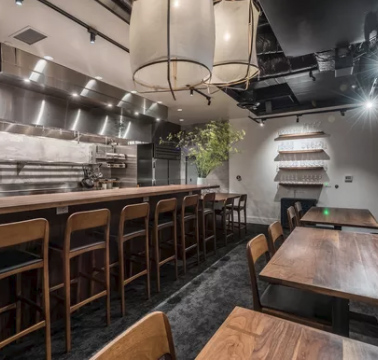
“Originally, we were negotiating a big space downtown and I had a flagship restaurant I was going to open. However, when the lease fell through, I realized that I’d done nothing to invest in the city or understand it,” said Beran. “I had to take a step back and dig deep into myself and my concept. Then, I realized it was important to focus on being a part of the neighborhood and not just be another restaurant in a city. Santa Monica has a great feeling of community and is a destination for both tourists and locals. In addition, our restaurant is right next to one of the largest farmers markets in LA, and since our dishes are comprised of locally sourced produce, having that access and developing those key relationships with local farms held a high premium for us.”
Being located in a highly-trafficked, established area like a mall presents advantages for restauranteurs. These malls provide built-in access to a large amount of people that are potential diners, as attracting enough organic foot traffic is often a challenge for restauranteurs. Additionally, these malls offer those with big ideas but small pocketbooks the opportunity to showcase their creativity in an otherwise inconspicuous, unexpected place. Also, building a brick-and-mortar restaurant from the ground up can be a huge financial undertaking for small business owners, not mention the headaches of permitting, zoning and building out a fully-functioning kitchen, so opening a restaurant in a pre-existing space is a big cost savings.
“For us, the food court or promenade aspect wasn’t a major hurdle and I was keeping my eyes open to opportunities outside of traditional consideration. For us, the ability to open something small and controlled in a part of town we really wanted to explore was most important and it forced me to be far more creative than if I would have done what was intended or expected. I wouldn’t change our process, being in this location has been amazing, challenging and weird, but worth it.”
As consumer trends continue to lean toward supporting local businesses, the industry will likely continue to see more small business owners looking outside of the box to make their restaurant dreams come true. Other cities are seeing the success of coupling luxury shopping with equally high-end restaurant options, as seen in Chicago at 900 North Michigan Shops and Tampa, FL at International Plaza. What advice does Beran have for small business owners who may want to take this route but are too afraid of the stigma that comes along with what appears to be a more plebeian location?
“Have an open mind and be willing to have fun. Traditionally, fine dining was ritual and routine, complete with matched plates, full suits and white gloves. The evolution of fine dining is moving away from the robotic, mechanical, ‘this is exactly the best thing you can do,’ to being more about personality, refinement and anticipating guests’ needs. The caliber of the food and presentation will speak for itself, so you should focus on creating a one-of-a-kind experience for your guests.”



